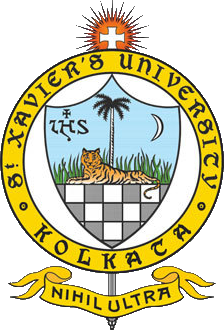Loss models : (Record no. 9508)
[ view plain ]
| 000 -LEADER | |
|---|---|
| fixed length control field | 10798cam a2200265 i 4500 |
| 005 - DATE & TIME | |
| control field | 20230519091651.0 |
| 008 - FIXED-LENGTH DATA ELEMENTS--GENERAL INFORMATION | |
| fixed length control field | 180712s2018 ilu ob 001 0 eng |
| 010 ## - LIBRARY OF CONGRESS CONTROL NUMBER | |
| LC control number | 2018033635 |
| 020 ## - ISBN | |
| International Standard Book Number | 9781119523734 (Adobe PDF) |
| 020 ## - ISBN | |
| International Standard Book Number | 9781119523758 (ePub) |
| 040 ## - CATALOGING SOURCE | |
| Original cataloging agency | S.X.U.K |
| 041 ## - Language | |
| Language | English |
| 082 00 - DDC NUMBER | |
| Classification number | R 368.01 KLU(LOS)Ed5 |
| 100 1# - MAIN ENTRY--PERSONAL NAME | |
| Personal name | Klugman, Stuart A., |
| 245 10 - TITLE STATEMENT | |
| Title | Loss models : |
| Sub Title | from data to decisions / |
| Statement of responsibility | Stuart A. Klugman, Society of Actuaries, Harry H. Panjer, University of Waterloo, Gordon E. Willmot, University of Waterloo. |
| 250 ## - EDITION STATEMENT | |
| Edition statement | 5th ed. |
| 260 ## - PUBLICATION, DISTRIBUTION, ETC. (IMPRINT) | |
| Place of publication, distribution, etc | New Jersey |
| Name of publisher, distributor, etc | Wiley |
| Date of publication, distribution, etc | c2019 |
| 300 ## - PHYSICAL DESCRIPTION | |
| Pages | 1 online resource |
| 500 ## - GENERAL NOTE | |
| General note | TABLE OF CONTENTS<br/>Preface xiii<br/><br/>About the Companion Website xv<br/><br/>Part I Introduction<br/><br/>1 Modeling 3<br/><br/>1.1 The Model-Based Approach 3<br/><br/>1.1.1 The Modeling Process 3<br/><br/>1.1.2 The Modeling Advantage 5<br/><br/>1.2 The Organization of This Book 6<br/><br/>2 Random Variables 9<br/><br/>2.1 Introduction 9<br/><br/>2.2 Key Functions and Four Models 11<br/><br/>2.2.1 Exercises 19<br/><br/>3 Basic Distributional Quantities 21<br/><br/>3.1 Moments 21<br/><br/>3.1.1 Exercises 28<br/><br/>3.2 Percentiles 29<br/><br/>3.2.1 Exercises 31<br/><br/>3.3 Generating Functions and Sums of Random Variables 31<br/><br/>3.3.1 Exercises 33<br/><br/>3.4 Tails of Distributions 33<br/><br/>3.4.1 Classification Based on Moments 33<br/><br/>3.4.2 Comparison Based on Limiting Tail Behavior 34<br/><br/>3.4.3 Classification Based on the Hazard Rate Function 35<br/><br/>3.4.4 Classification Based on the Mean Excess Loss Function 36<br/><br/>3.4.5 Equilibrium Distributions and Tail Behavior 38<br/><br/>3.4.6 Exercises 39<br/><br/>3.5 Measures of Risk 41<br/><br/>3.5.1 Introduction 41<br/><br/>3.5.2 Risk Measures and Coherence 41<br/><br/>3.5.3 Value at Risk 43<br/><br/>3.5.4 Tail Value at Risk 44<br/><br/>3.5.5 Exercises 48<br/><br/>Part II Actuarial Models<br/><br/>4 Characteristics of Actuarial Models 51<br/><br/>4.1 Introduction 51<br/><br/>4.2 The Role of Parameters 51<br/><br/>4.2.1 Parametric and Scale Distributions 52<br/><br/>4.2.2 Parametric Distribution Families 54<br/><br/>4.2.3 Finite Mixture Distributions 54<br/><br/>4.2.4 Data-Dependent Distributions 56<br/><br/>4.2.5 Exercises 59<br/><br/>5 Continuous Models 61<br/><br/>5.1 Introduction 61<br/><br/>5.2 Creating New Distributions 61<br/><br/>5.2.1 Multiplication by a Constant 62<br/><br/>5.2.2 Raising to a Power 62<br/><br/>5.2.3 Exponentiation 64<br/><br/>5.2.4 Mixing 64<br/><br/>5.2.5 Frailty Models 68<br/><br/>5.2.6 Splicing 69<br/><br/>5.2.7 Exercises 70<br/><br/>5.3 Selected Distributions and Their Relationships 74<br/><br/>5.3.1 Introduction 74<br/><br/>5.3.2 Two Parametric Families 74<br/><br/>5.3.3 Limiting Distributions 74<br/><br/>5.3.4 Two Heavy-Tailed Distributions 76<br/><br/>5.3.5 Exercises 77<br/><br/>5.4 The Linear Exponential Family 78<br/><br/>5.4.1 Exercises 80<br/><br/>6 Discrete Distributions 81<br/><br/>6.1 Introduction 81<br/><br/>6.1.1 Exercise 82<br/><br/>6.2 The Poisson Distribution 82<br/><br/>6.3 The Negative Binomial Distribution 85<br/><br/>6.4 The Binomial Distribution 87<br/><br/>6.5 The (𝑎, 𝑏, 0) Class 88<br/><br/>6.5.1 Exercises 91<br/><br/>6.6 Truncation and Modification at Zero 92<br/><br/>6.6.1 Exercises 96<br/><br/>7 Advanced Discrete Distributions 99<br/><br/>7.1 Compound Frequency Distributions 99<br/><br/>7.1.1 Exercises 105<br/><br/>7.2 Further Properties of the Compound Poisson Class 105<br/><br/>7.2.1 Exercises 111<br/><br/>7.3 Mixed-Frequency Distributions 111<br/><br/>7.3.1 The General Mixed-Frequency Distribution 111<br/><br/>7.3.2 Mixed Poisson Distributions 113<br/><br/>7.3.3 Exercises 118<br/><br/>7.4 The Effect of Exposure on Frequency 120<br/><br/>7.5 An Inventory of Discrete Distributions 121<br/><br/>7.5.1 Exercises 122<br/><br/>8 Frequency and Severity with Coverage Modifications 125<br/><br/>8.1 Introduction 125<br/><br/>8.2 Deductibles 126<br/><br/>8.2.1 Exercises 131<br/><br/>8.3 The Loss Elimination Ratio and the Effect of Inflation for Ordinary Deductibles 132<br/><br/>8.3.1 Exercises 133<br/><br/>8.4 Policy Limits 134<br/><br/>8.4.1 Exercises 136<br/><br/>8.5 Coinsurance, Deductibles, and Limits 136<br/><br/>8.5.1 Exercises 138<br/><br/>8.6 The Impact of Deductibles on Claim Frequency 140<br/><br/>8.6.1 Exercises 144<br/><br/>9 Aggregate Loss Models 147<br/><br/>9.1 Introduction 147<br/><br/>9.1.1 Exercises 150<br/><br/>9.2 Model Choices 150<br/><br/>9.2.1 Exercises 151<br/><br/>9.3 The Compound Model for Aggregate Claims 151<br/><br/>9.3.1 Probabilities and Moments 152<br/><br/>9.3.2 Stop-Loss Insurance 157<br/><br/>9.3.3 The Tweedie Distribution 159<br/><br/>9.3.4 Exercises 160<br/><br/>9.4 Analytic Results 167<br/><br/>9.4.1 Exercises 170<br/><br/>9.5 Computing the Aggregate Claims Distribution 171<br/><br/>9.6 The Recursive Method 173<br/><br/>9.6.1 Applications to Compound Frequency Models 175<br/><br/>9.6.2 Underflow/Overflow Problems 177<br/><br/>9.6.3 Numerical Stability 178<br/><br/>9.6.4 Continuous Severity 178<br/><br/>9.6.5 Constructing Arithmetic Distributions 179<br/><br/>9.6.6 Exercises 182<br/><br/>9.7 The Impact of Individual Policy Modifications on Aggregate Payments 186<br/><br/>9.7.1 Exercises 189<br/><br/>9.8 The Individual Risk Model 189<br/><br/>9.8.1 The Model 189<br/><br/>9.8.2 Parametric Approximation 191<br/><br/>9.8.3 Compound Poisson Approximation 193<br/><br/>9.8.4 Exercises 195<br/><br/>Part III Mathematical Statistics<br/><br/>10 Introduction to Mathematical Statistics 201<br/><br/>10.1 Introduction and Four Data Sets 201<br/><br/>10.2 Point Estimation 203<br/><br/>10.2.1 Introduction 203<br/><br/>10.2.2 Measures of Quality 204<br/><br/>10.2.3 Exercises 214<br/><br/>10.3 Interval Estimation 216<br/><br/>10.3.1 Exercises 218<br/><br/>10.4 The Construction of Parametric Estimators 218<br/><br/>10.4.1 The Method of Moments and Percentile Matching 218<br/><br/>10.4.2 Exercises 221<br/><br/>10.5 Tests of Hypotheses 224<br/><br/>10.5.1 Exercise 228<br/><br/>11 Maximum Likelihood Estimation 229<br/><br/>11.1 Introduction 229<br/><br/>11.2 Individual Data 231<br/><br/>11.2.1 Exercises 232<br/><br/>11.3 Grouped Data 235<br/><br/>11.3.1 Exercises 236<br/><br/>11.4 Truncated or Censored Data 236<br/><br/>11.4.1 Exercises 241<br/><br/>11.5 Variance and Interval Estimation for Maximum Likelihood Estimators 242<br/><br/>11.5.1 Exercises 247<br/><br/>11.6 Functions of Asymptotically Normal Estimators 248<br/><br/>11.6.1 Exercises 250<br/><br/>11.7 Nonnormal Confidence Intervals 251<br/><br/>11.7.1 Exercise 253<br/><br/>12 Frequentist Estimation for Discrete Distributions 255<br/><br/>12.1 The Poisson Distribution 255<br/><br/>12.2 The Negative Binomial Distribution 259<br/><br/>12.3 The Binomial Distribution 261<br/><br/>12.4 The (𝑎, 𝑏, 1) Class 264<br/><br/>12.5 Compound Models 268<br/><br/>12.6 The Effect of Exposure on Maximum Likelihood Estimation 269<br/><br/>12.7 Exercises 270<br/><br/>13 Bayesian Estimation 275<br/><br/>13.1 Definitions and Bayes’ Theorem 275<br/><br/>13.2 Inference and Prediction 279<br/><br/>13.2.1 Exercises 285<br/><br/>13.3 Conjugate Prior Distributions and the Linear Exponential Family 290<br/><br/>13.3.1 Exercises 291<br/><br/>13.4 Computational Issues 292<br/><br/>Part IV Construction of Models<br/><br/>14 Construction of Empirical Models 295<br/><br/>14.1 The Empirical Distribution 295<br/><br/>14.2 Empirical Distributions for Grouped Data 300<br/><br/>14.2.1 Exercises 301<br/><br/>14.3 Empirical Estimation with Right Censored Data 304<br/><br/>14.3.1 Exercises 316<br/><br/>14.4 Empirical Estimation of Moments 320<br/><br/>14.4.1 Exercises 326<br/><br/>14.5 Empirical Estimation with Left Truncated Data 327<br/><br/>14.5.1 Exercises 331<br/><br/>14.6 Kernel Density Models 332<br/><br/>14.6.1 Exercises 336<br/><br/>14.7 Approximations for Large Data Sets 337<br/><br/>14.7.1 Introduction 337<br/><br/>14.7.2 Using Individual Data Points 339<br/><br/>14.7.3 Interval-Based Methods 342<br/><br/>14.7.4 Exercises 346<br/><br/>14.8 Maximum Likelihood Estimation of Decrement Probabilities 347<br/><br/>14.8.1 Exercise 349<br/><br/>14.9 Estimation of Transition Intensities 350<br/><br/>15 Model Selection 353<br/><br/>15.1 Introduction 353<br/><br/>15.2 Representations of the Data and Model 354<br/><br/>15.3 Graphical Comparison of the Density and Distribution Functions 355<br/><br/>15.3.1 Exercises 360<br/><br/>15.4 Hypothesis Tests 360<br/><br/>15.4.1 The Kolmogorov–Smirnov Test 360<br/><br/>15.4.2 The Anderson–Darling Test 363<br/><br/>15.4.3 The Chi-Square Goodness-of-Fit Test 363<br/><br/>15.4.4 The Likelihood Ratio Test 367<br/><br/>15.4.5 Exercises 369<br/><br/>15.5 Selecting a Model 371<br/><br/>15.5.1 Introduction 371<br/><br/>15.5.2 Judgment-Based Approaches 372<br/><br/>15.5.3 Score-Based Approaches 373<br/><br/>15.5.4 Exercises 381<br/><br/>Part V Credibility<br/><br/>16 Introduction to Limited Fluctuation Credibility 387<br/><br/>16.1 Introduction 387<br/><br/>16.2 Limited Fluctuation Credibility Theory 389<br/><br/>16.3 Full Credibility 390<br/><br/>16.4 Partial Credibility 393<br/><br/>16.5 Problems with the Approach 397<br/><br/>16.6 Notes and References 397<br/><br/>16.7 Exercises 397<br/><br/>17 Greatest Accuracy Credibility 401<br/><br/>17.1 Introduction 401<br/><br/>17.2 Conditional Distributions and Expectation 404<br/><br/>17.3 The Bayesian Methodology 408<br/><br/>17.4 The Credibility Premium 415<br/><br/>17.5 The Bühlmann Model 418<br/><br/>17.6 The Bühlmann–Straub Model 422<br/><br/>17.7 Exact Credibility 427<br/><br/>17.8 Notes and References 431<br/><br/>17.9 Exercises 432<br/><br/>18 Empirical Bayes Parameter Estimation 445<br/><br/>18.1 Introduction 445<br/><br/>18.2 Nonparametric Estimation 448<br/><br/>18.3 Semiparametric Estimation 459<br/><br/>18.4 Notes and References 460<br/><br/>18.5 Exercises 460<br/><br/>Part VI Simulation<br/><br/>19 Simulation 467<br/><br/>19.1 Basics of Simulation 467<br/><br/>19.1.1 The Simulation Approach 468<br/><br/>19.1.2 Exercises 472<br/><br/>19.2 Simulation for Specific Distributions 472<br/><br/>19.2.1 Discrete Mixtures 472<br/><br/>19.2.2 Time or Age of Death from a Life Table 473<br/><br/>19.2.3 Simulating from the (𝑎, 𝑏, 0) Class 474<br/><br/>19.2.4 Normal and Lognormal Distributions 476<br/><br/>19.2.5 Exercises 477<br/><br/>19.3 Determining the Sample Size 477<br/><br/>19.3.1 Exercises 479<br/><br/>19.4 Examples of Simulation in Actuarial Modeling 480<br/><br/>19.4.1 Aggregate Loss Calculations 480<br/><br/>19.4.2 Examples of Lack of Independence 480<br/><br/>19.4.3 Simulation Analysis of the Two Examples 481<br/><br/>19.4.4 The Use of Simulation to Determine Risk Measures 484<br/><br/>19.4.5 Statistical Analyses 484<br/><br/>19.4.6 Exercises 486<br/><br/>A An Inventory of Continuous Distributions 489<br/><br/>A.1 Introduction 489<br/><br/>A.2 The Transformed Beta Family 493<br/><br/>A.2.1 The Four-Parameter Distribution 493<br/><br/>A.2.2 Three-Parameter Distributions 493<br/><br/>A.2.3 Two-Parameter Distributions 494<br/><br/>A.3 The Transformed Gamma Family 496<br/><br/>A.3.1 Three-Parameter Distributions 496<br/><br/>A.3.2 Two-Parameter Distributions 497<br/><br/>A.3.3 One-Parameter Distributions 499<br/><br/>A.4 Distributions for Large Losses 499<br/><br/>A.4.1 Extreme Value Distributions 499<br/><br/>A.4.2 Generalized Pareto Distributions 500<br/><br/>A.5 Other Distributions 501<br/><br/>A.6 Distributions with Finite Support 502<br/><br/>B An Inventory of Discrete Distributions 505<br/><br/>B.1 Introduction 505<br/><br/>B.2 The (𝑎, 𝑏, 0) Class 506<br/><br/>B.3 The (𝑎, 𝑏, 1) Class 507<br/><br/>B.3.1 The Zero-Truncated Subclass 507<br/><br/>B.3.2 The Zero-Modified Subclass 509<br/><br/>B.4 The Compound Class 509<br/><br/>B.4.1 Some Compound Distributions 510<br/><br/>B.5 A Hierarchy of Discrete Distributions 511<br/><br/>C Frequency and Severity Relationships 513<br/><br/>D The Recursive Formula 515<br/><br/>E Discretization of the Severity Distribution 517<br/><br/>E.1 The Method of Rounding 517<br/><br/>E.2 Mean Preserving 518<br/><br/>E.3 Undiscretization of a Discretized Distribution 518<br/><br/>References 521<br/><br/>Index 529 |
| 650 #0 - Subject | |
| Subject | Insurance |
| 650 #0 - Subject | |
| Subject | Insurance |
| 700 1# - Added Entry Personal Name | |
| Added Entry Personal Name | Panjer, Harry H., |
| Relator Code | auth. |
| 700 1# - Added Entry Personal Name | |
| Added Entry Personal Name | Willmot, Gordon E., |
| Relator Code | auth. |
| 942 ## - ADDED ENTRY ELEMENTS (KOHA) | |
| Koha item type | REFERENCE STATISTICS |
| Withdrawn status | Lost status | Source of classification or shelving scheme | Damaged status | Not for loan | Koha collection | Location (home branch) | Sublocation or collection (holding branch) | Shelving location | Date acquired | Source of acquisition | Serial Enumeration / chronology | Koha issues (times borrowed) | Koha full call number | Barcode (Accession No.) | Koha date last seen | Copy Number | Price effective from | Koha item type |
|---|---|---|---|---|---|---|---|---|---|---|---|---|---|---|---|---|---|---|
| Dewey Decimal Classification | Not For Loan | Reference | St. Xavier's University, Kolkata | St. Xavier's University, Kolkata | Reference Section | 05/19/2023 | Segment book distributors | S.X.U.K | R 368.01 KLU(LOS)Ed5 | US9603 | 05/19/2023 | 9603 | 05/19/2023 | REFERENCE STATISTICS |

